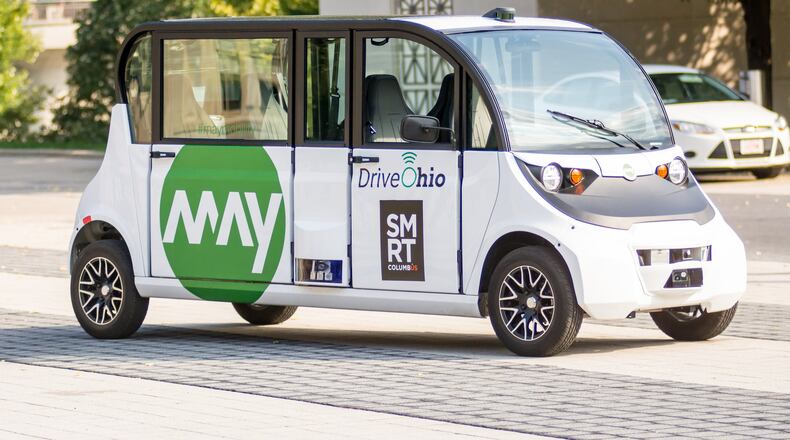RELATED: 2 area cities to test driverless cars
Self-driving shuttles are already operating in Ohio, and other programs are on the way.
“One such service just launched in downtown Columbus this month. Also, the city of Youngstown just won a $10.5 million grant to make mobility improvements to their downtown, including using self-driving shuttles. A few other cities are also looking into the possibility,” said Erica Hawkins, director of communications for the Ohio Department of Transportation.
Pozzuto previously told the Dayton Daily News that self-driving shuttles are envisioned as a way to connect the city’s historic downtown on South Main Street with Wright Station — a coming development to feature a performing arts center, retail and restaurants — at Main and Central Avenue, the city’s central crossroads.
“Autonomous vehicles are the future. In Springboro, we like being on the cutting edge of things,” Pozzuto said.
MORE: Springboro continues investing in crossroads redevelopment
Pozzuto said there were no short-term expenses related to the DriveOhio collaboration, and no money had been set aside for the projects in the 2019 budget.
“DriveOhio has been working and meeting with technology partners who are developing technology solutions and are looking for opportunities to test/deploy their technology. This agreement allows DriveOhio to share what Springboro is seeking with companies looking for local government partners,” Hawkins added.
DriveOhio hopes to leverage the work of people like Vamsy Chodavarapu, a professor at University of Dayton developing sensors to help autonomous cars respond to bad weather and construction zones.
“That’s very important for our region and the northern regions in the U.S.,” said Chodavarapu, also a partner in Beavercreek-based Prixarc. “There’s a lot of testing that needs to be done to ensure that these sensors and systems are safe.”
Earlier this year, the city and school district added turn lanes and improved traffic control devices at the entrance to Springboro Junior High, one of five schools along the city’s main north-south road, to improve traffic flow. The project cost $389,000.
Pozzuto cautioned those thinking this project or the high-tech plans would totally solve problems on South Main Street during high-traffic periods, often related to school.
“Whenever you dump 2,000 cars on a two-lane road in a 15- to 20-minute span, there’s really not a lot that you can do,” Pozzuto said.
Pozzuto said DriveOhio officials hoped the technology would save drivers five to 10 minutes during peak-traffic drive times.
“Five minutes is a long time to some people,” he said.
About the Author

